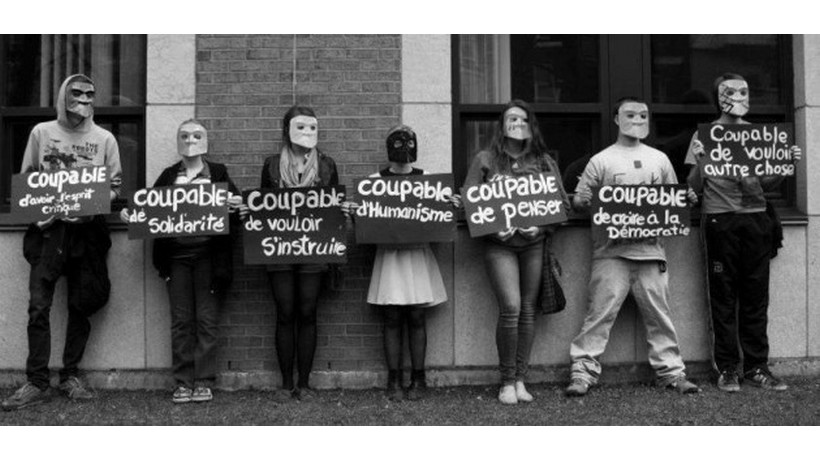In struggles, the radicality of violence is often contrasted with the softness of nonviolence.
So how is nonviolence radical?
Transcript of the video
In reality, violence is not radical because it does not act on the causes of the conflict.
To be radical is not to attack the people who are the representatives of the State, or the people who are responsible for the injustice, but to attack the root of the conflicts, the root of the situations of injustice.
Violence is incapable of uprooting injustice because it proceeds from a lack of analysis. Violence believes that by attacking people or property, one is really attacking the symbols of injustice and scaring the powerful. This is a mistake.
The strength of injustice lies in our passivity, our silence, our resignation to the established disorder. The revolt against injustice is therefore necessary, but it must not have the wrong objective.
It is a question of breaking, through radical action, with the obedience and consent of the majority of people, whatever is the basis of the power responsible for injustice.
The strength of nonviolence, and therefore its radicality, is that it seeks to dry up the sources of power, by implementing actions of non-cooperation and targeted disobedience that aim to shake the system that produces injustice.
Violence only strengthens state power because the capacity for violence of state power will always be greater than that of the citizens. How many struggles have been stifled because they have turned violent?
In reality, violence is essentially a mode of expression, it is not a mode of political action. It expresses anger, rage, but that is all. It acts punctually, but once it has expressed itself, once it has destroyed what it could destroy, nothing remains and the cause has lost a lot.
By acting through nonviolence, one deprives the power of an element of justification of its violence. This does not mean that power will not exercise violence.
On the contrary, it can exercise greater violence against non-violent demonstrators, because its objective is to tip the movement into violence. Violence is thus a trap set by the state to discredit a movement and justify repression.
It is therefore imperative to keep the course of nonviolence, despite the repression. It is a question, let us not forget, of winning over public opinion, which can exert very strong political pressure on the authorities.
In summary, I believe that the best way to explain the radical nature of nonviolence is to listen to this analysis by Gandhi.
“Any self-respecting movement goes through five phases: indifference, mockery, insults, repression and esteem. […] Any movement that survives repression, moderate or cruel, invariably commands respect, which is synonymous with success. If we are faithful, this repression can be seen as the precursor of victory. But if we are faithful, we must never allow ourselves to be intimidated, nor, driven by anger, to take vengeance and use violence. Violence is suicide.”
Everything is said. Violence is a suicide, it can only destroy the movement. Repression must be anticipated, in order to better curb it and defeat it. Repression is inevitable and the whole point, and the whole radicality of nonviolence is to prepare to defeat this repression, by absorbing it, by making it useless.
The real strength, and the real radicality are indeed on the side of nonviolence.










